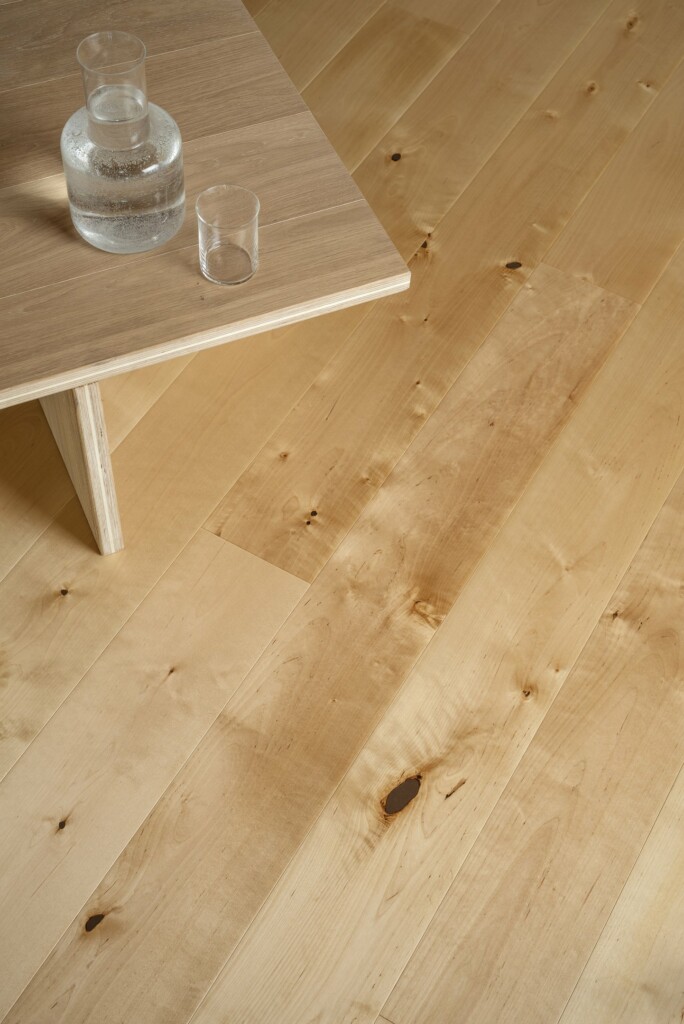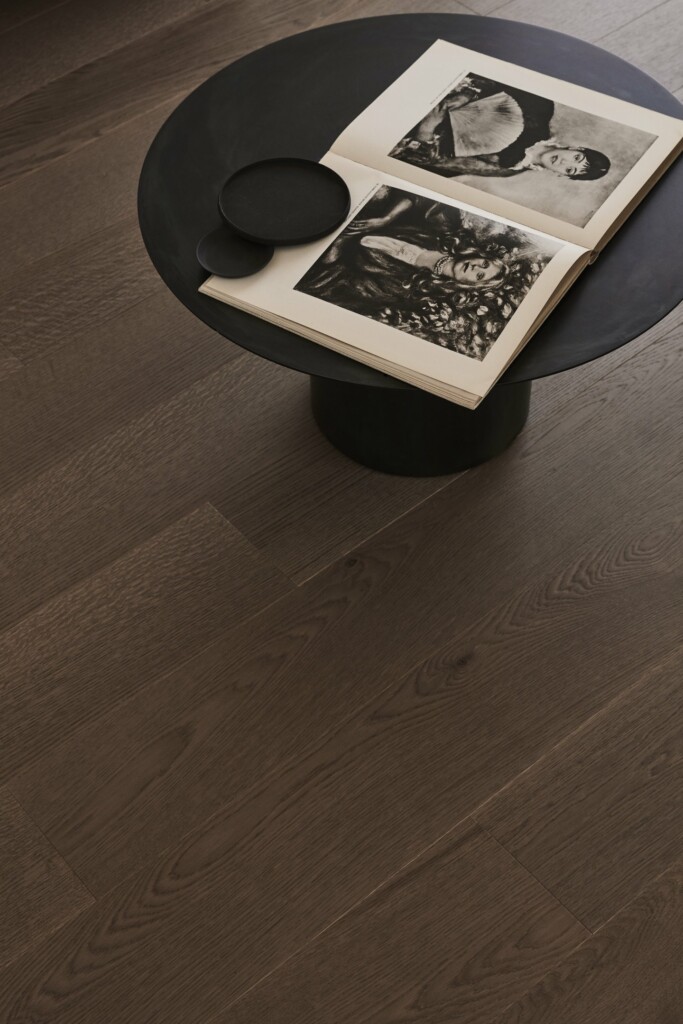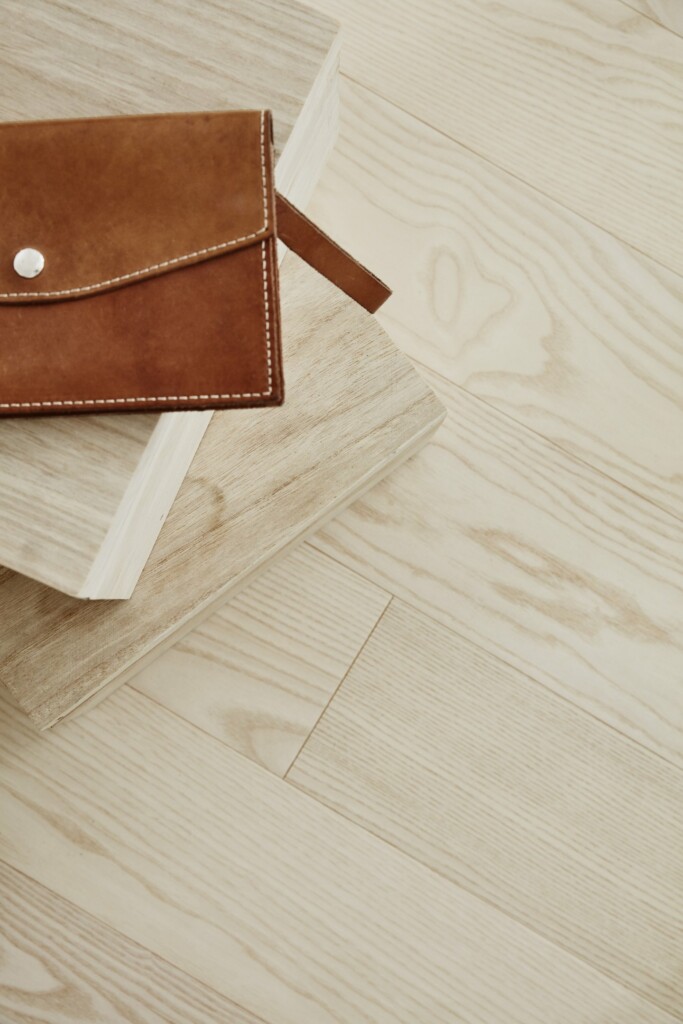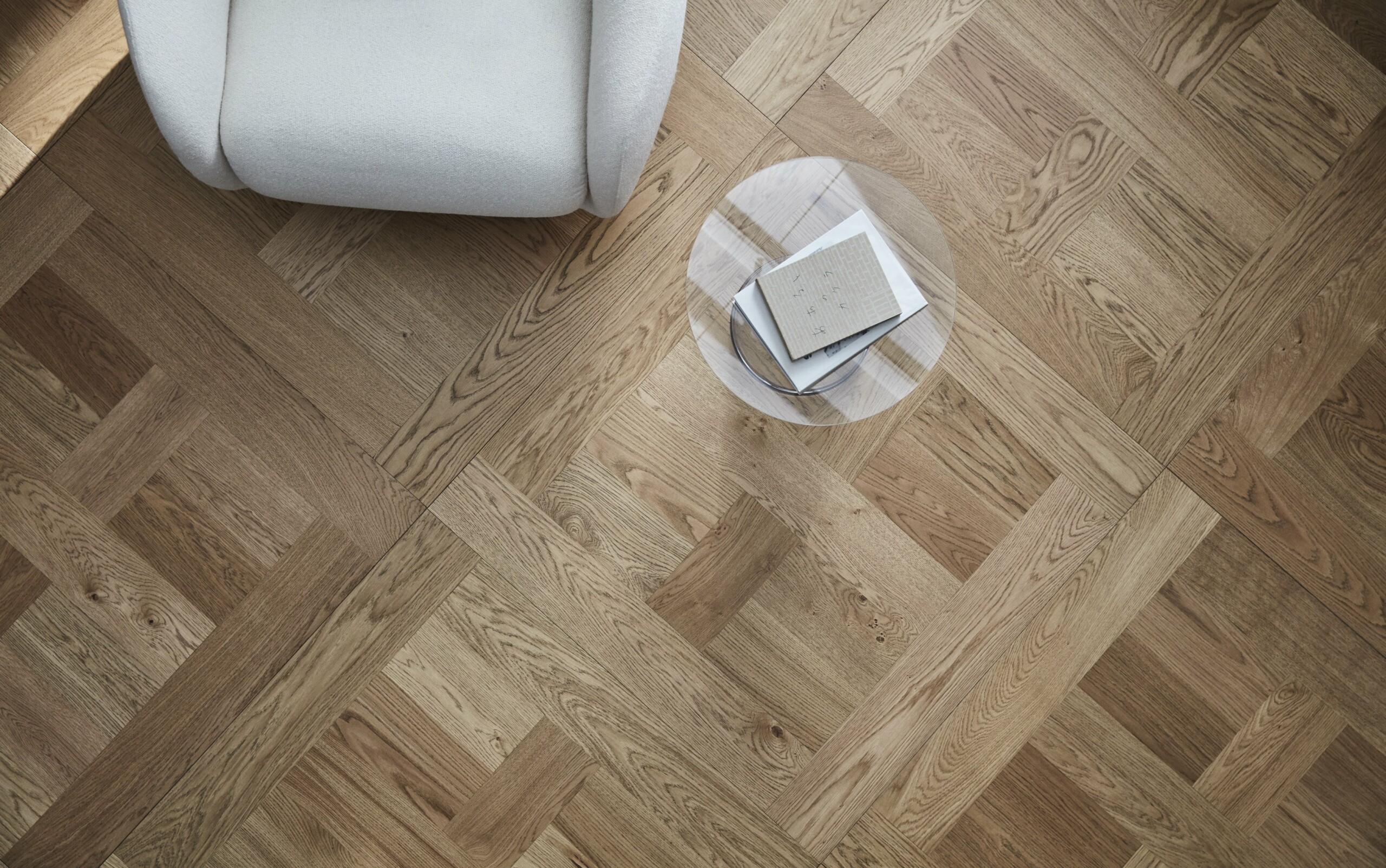Your ABC guide to parquet flooring
The floor is one of the largest surfaces in your home. It is present in every room, and you can feel it under your feet every day. Therefore, making the right choice of flooring material is a significant decision. On this page, we’ve compiled our ABC tips to simplify the process of selecting the ideal parquet flooring for your home.

A) Explore our selection
We manufacture wooden full plank and design parquet flooring for individuals who appreciate natural and safe flooring options, along with high-quality Finnish craftsmanship. The wide, plank-like appearance, subtle bevels on all sides, versatile color and surface treatments, as well as beautiful design patterns, set Timberwise apart from other parquets. Our unique birch plywood 3-layer structure also ensures a sturdy and even floor.
Select wood species and grade
Explore various wood species, assess their durability, and explore available grades (grades meaning amount of knots). Take into account the specific environment where the parquet will be installed and the expected level of wear and tear in different life scenarios. Our raw material is exclusively traceable, ethically sourced, and ecologically grown wood. We encourage you to delve into our comprehensive assortment guide, which provides detailed insights into the characteristics of different wood species and grades, illustrated with specific examples.
Explore and download guide
Select surface treatment
Whether it’s a brushed or sanded surface finish, or a wax-oiled or lacquered surface treatment, each option has its own merits. From our versatile selection, you will undoubtedly find the ideal surface treatment for your floor. Different surface and color treatments, along with lacquering and hard wax oiling, impart individuality and vibrancy to the wood surface while also enhancing the durability of the floor.
Explore surface treatments
Select shade
Timberwise plank flooring selection is not only the most versatile but also the most beautiful. You’ll discover over 70 stunning shades to choose from. Consider the overall ambiance and style of your living space. Is it modern, traditional, Scandinavian, or something entirely different? Also, reflect on the color palette of your furniture and home walls. A flooring shade that complements your decor creates a harmonious overall look.
Explore products and shades

B) Order a sample
When making choices between different shades and wood species, it is advisable to order a sample. You can easily and quickly have them delivered to your home. We always encourage ordering at least two favorite colors and comparing them to each other. Assessing different shades is most effective when you have something to compare them with. We also recommend examining the color samples in the exact environment and lighting where the floor will be installed
How is the price of Timberwise flooring formed?
Our high-quality parquet selection offers versatile options for finding the perfect solution for your home. By understanding the factors that affect to the price, you can make an informed decision that suits both your budget and the intended use of the space.
Wood species
The first significant factor in pricing is the chosen wood species. Hardwoods such as oak or ash are generally slightly more expensive than softwoods but offer excellent durability and strength. Softwoods like pine and douglas fir are more budget-friendly, but signs of wear may be more visible over time. We recommend weighing your choice in terms of both price and durability, and selecting the wood species for your home’s floor based on its purpose and wear.
Grade meaning amount of knots
Another important price-influencing factor is the chosen grade meaning the amount of knots. The Select grade, nearly free of knots, is always more expensive than a more knotty grade. The Classic, with fewer knots, provides a mid-priced option, creating a natural-looking floor surface. The Vintage grade, with more knots, is the most economical choice. Vintage is also a very ecological option, using all parts of the wood, not just the best sections.
Plank width and style
The width of the plank directly affects the floor’s price. The wider the product, the more expensive it is because there is less wide raw material available. The floor’s style also impacts the price. Plank flooring is often a more affordable option than design parquet because their manufacturing processes differ. The production of design parquet demands specific precision, craftsmanship, and involves a more intricate process, contributing to its higher price.
Installation
While the installation method doesn’t directly affect the price of our products, it does impact the total cost of a parquet floor. For example, floating plank flooring is cheaper to install than glue-down. Glued plank parquet installation is more expensive, but a glued floor is more stable and less affected by humidity. Gluing the parquet to the subfloor also allows for installation without transitions, thresholds, or breaks. Design parquet must always be installed by gluing to the subfloor and is more expensive due to the slower installation process, requiring special precision.
Surface treatments
The surface treatment and processing of the floor do not affect the price in Timberwise. You can choose your desired shade and finish at no extra cost. Surface brushing or sanding also does not impact the final price of the floor.

C) Find your closest retailer
After making your product and shade selections, locate your nearest Timberwise retailer and ask for more information or order the product. Our skilled partners will help you with your order, and you can get your Floor for life. And if you are in Finland, you can also visit our showroom in Helsinki.
How to recycle your samples
You can recycle the samples you ordered according to the option that suits you best:
- Safely burn the color samples in a fireplace or sauna.
- Dispose of the color samples with other construction waste at a waste disposal site.
- Dispose of a small quantity of color samples in energy waste or mixed waste.
Do you have any questions?
